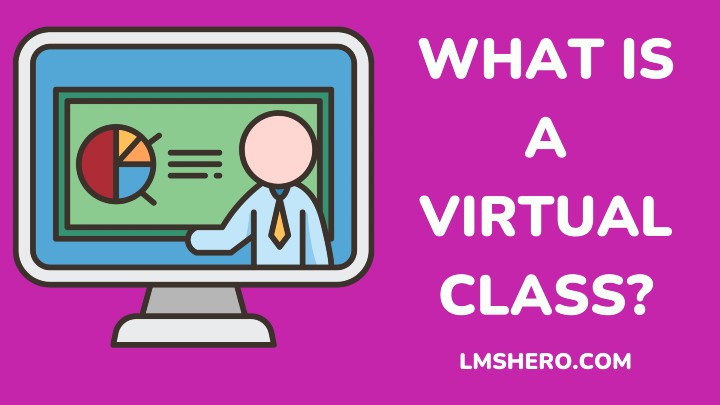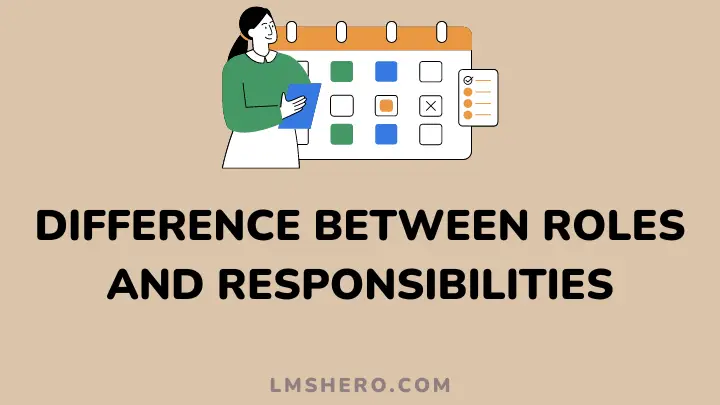Are you looking for answers to the question, “What is a virtual class?” This blog post is for you.
Virtual classes are effective teaching techniques that bring the classroom to students. Students can connect with experts who speak at schools through video conferencing.
A teaching expert can simultaneously teach several online classrooms at once, allowing educators to increase the size of their classes without increasing student-to-faculty ratios.
With the use of the internet today, it has become much easier for one to learn anything. You can find thousands of free webinars, seminars, and classes in the comfort of your own home through the internet.
A virtual class is just like any other type of class but without the usual time and place restrictions.
A virtual class is a term used in distance education. The need for this type of class has occurred due to many life situations and career aspirations today. A virtual class brings the educator and the student together online in a classroom setting.
The following article discusses everything you need to know about virtual classes, their importance, and their benefits.
What Is a Virtual Class?
A virtual class is an online course, typically supported by synchronous communication forms such as discussion boards, email lists, and websites.
A virtual class has the same structure as a regular class and is “synchronous” or related to a real lifetime or space.
Also, a virtual class is a streamlined platform that allows students to tune in online to lectures, full sections, or individual talks. This format can be less time-consuming for students who are unable to attend the traditional lecture while allowing them to view an instructor’s lesson or lecture later.
Recent advances in education, specifically the use of Web‐based tools and programs, have led to widespread opportunities for students to engage in online learning.
What Is the Importance of Virtual Classes?
Virtual classes are significant to the professional advancement of your students. Many students may find it difficult to attend a physical class due to their particular circumstances.
As a result, virtual classes play a crucial role in providing you with the opportunity to gain education when you would not otherwise be able to.
Students need to understand that an online degree is not less than the one that you obtain from a brick-and-mortar school.
The importance of virtual classes is to provide quality education using the internet.
Most companies are already employing this concept because it promotes competition, reduces overhead costs, and increases the knowledge base of its professionals.
They also help to improve the learning experience of people as well as businesses by providing convenience. Today, people and companies often find it difficult to attend classes or to physically attend events or meetings in this fast-paced world.
This is why this technology has been introduced, where virtual classes, meetings, and training can be provided to almost anyone on a global scale on a 24/7 basis without any obstacles.
What Are the Benefits of Virtual Classes?
The biggest benefit of virtual education is truly convenient learning. You can virtually attend your class from any location with an internet connection, and there is no need for you to arrange for transportation or stay in a particular location until the end of the course.
Here are some major benefits of virtual classes and why they are an ideal educational option.
1. It Is Cost-Effective
When you choose the flexible option, virtual classes are cost-effective, affordable, and convenient for you to take. You can access your classes at home or anywhere with an Internet connection.
That means you can take more classes while staying within your budget. Learn the techniques of other artists, take advanced workshops, or expand your craft skills.
These low-cost offerings are great for students who can’t make it to campus or professionals looking to further their skill set.
2. You Choose Your Schedule
Studying is easier when you can choose your own schedule. That’s one of the benefits of taking virtual classes. No more commuting or parking problems!
You study online when it’s convenient for you, participate in class discussions as you see fit, and stay connected with classmates around the world if you take classes online.
3. You Can Learn Anywhere
Whether you are an employer, an online learner, or taking virtual classes to improve your professional development, there are enormous benefits to attending virtual courses. You can attend these classes from anywhere.
That’s right! Classes are available 24/7 worldwide. The only tangible thing that is required for you to attend virtual courses is a desktop, tablet, mobile device, or laptop that can connect to the internet.
A virtual classroom lets you take an entire class with a professor, even if you’re not at the same school. If you’re working full-time or raising children, you can still get an education that fits your lifestyle.
4. You Can Get a Degree at Home
Earning a degree at any time and place has become highly popular if you want the flexibility of setting your schedule while continuing to work.
To get started, you can take an online self-assessment to gauge where your current knowledge level lies, the type of degree you want, and the price range you wish to stay within. Then, you can find a degree program that fits their criteria and register for classes.
It is unnecessary to drive to a college campus and go through all the hassles of registering for classes, commuting to and from classes, parking, and paying tuition. Now you can take courses online through a virtual class.
The time spent online with an online course is about the same as if you were to participate in a traditional classroom course. Studies have demonstrated significant learning gains when online instruction is implemented correctly.
From an instructor’s standpoint, you will find that you can learn more about your students by utilizing technology, including email, group discussion boards, chat rooms, etc.
5. Better for People with Physical Disabilities
Virtual classes are better for people with physical disabilities due to the ability of students and teachers to communicate digitally.
Computers and the internet may be more accessible to students with disabilities than traditional classrooms. The same is true for many students with physical disabilities, such as cerebral palsy, autism, and those affecting mobility.
Sometimes they may not even have access to buildings with elevators. The online classes allow you to participate regardless of where you live. They are also more personal since you sometimes get individual attention from the teacher.
6. Attendees Do Not Need Formal Attire
While the virtual classroom is very much similar to an actual classroom when it comes to the student interface, it is the only way to experience the benefits of being in a classroom without having to dress formally.
Attending these online classes doesn’t require formal attire, and there is no strict dress code.
7. There Are Fewer Distractions in the Classroom
In a traditional classroom students often get distracted by other students around them. In a virtual classroom, students sit at their laptops and login to the online course. This allows for a more focused learning experience and you can provide a more personalized learning experience.
With virtual classes, you can easily keep on top of your grades and stay up-to-date on coursework from your smartphone or tablet. You can connect with teachers and classmates to discuss class material in a fun, social online class community.
8. You Learn at Your Own Pace
Virtual courses allow you to learn at your own pace, on your timetable. These programs also allow you to be more flexible and less stressed. Books or materials do not need to be purchased and there is no need to travel to and from school.
The other benefit is that face-to-face interaction with other students and teachers is not necessary. This provides for a more relaxed environment since not only do you get to interact with others at your own pace but it is also done in a relaxing atmosphere.
9. Quick, Independent Learning for Students with Busy Lives and Careers
No matter where you are, whether on the train, at your office desk, or in a coffee shop, you can attend a virtual class.
Virtual classes allow quick, independent learning for students with busy lives and careers. Immediate access to materials from anywhere anytime eliminates the need “to be there” at a fixed time.
Virtual education brings greater access to quality higher education in an era of busy careers and individuals with widely varying educational needs.
The innovative learning option uses technology to offer you a differentiated alternative to face-to-face courses that still provides quality learning while meeting convenience needs.
Through self-paced virtual content, you can study whenever you want, wherever you are. A benefit that is especially useful to students who work over 15 hours each week.
10. Available for Anyone Who Has Access to a Computer, Tablet, or Smartphone
Virtual classes are now available to anyone who has access to a computer, tablet, or smartphone. You can select the classes you want when you want them and as many as you want. Some lessons come with a test to make sure you retain what you have learned.
What Are the Disadvantages of a Virtual Class?
There are certainly some disadvantages of a virtual class. If we compare our online learning system with the traditional classroom, we may find some discrepancies.
Limited interaction between students and teachers: Of course, in most cases, this is not a problem, however, there may be times when the answer to a question requires conversation and explanation and if this is not available in class it will certainly cause problems.
Another disadvantage is the lack of communication among classmates. You can ask a question in class and have one student answer you, but it also doesn’t express the overall idea that you’d get if you could go up to your classmate’s desk and ask them.
However, the main disadvantage of virtual classes is having limited real-world interaction with teachers and other students. This limited interaction limits the ability of the student to communicate their ideas with other class members or voice concerns or questions in class gatherings.
FAQs
Are virtual classes the same as online courses?
Online classes are conducted through an online web interface, whereas virtual classes are conducted via videoconferencing technology. Videoconferencing allows students at multiple locations to see each other as well as their instructor on a screen.
Virtual classes are often confused with online classes, although they are slightly different. A virtual class is any class that you can access in real time via your computer or mobile device.
While both virtual and online classes are conducted over the internet, online classes sometimes involve video streaming or prerecorded lessons.
How do virtual classes differ from traditional classes?
The main difference between virtual classes and traditional classes is the surroundings they are conducted. Virtual classes teach the same things, however, it is done online rather than on-site.
You can choose to do the course on your schedule, on your computer, on your tablet, or on any other device that can connect to the Internet.
What is the best approach to teaching virtual classes?
The best way to teach virtual classes is to help students to learn actively. To create an interactive learning experience, you’ll need to break the ice, keep the temperature right, and keep the relationship flowing.
Conclusion
Virtual classes are revolutionizing the way students receive their education. While not new, virtual classes are becoming more common due to the advances in technology.
In addition, online learning is one of the most prevalent types of virtual classes available.
Online learning significantly increases the amount of information sent to students. It also drastically reduces the time it would take for professors to individually teach each student this information.
Finally, benefits may include increased awareness or access to information due to new or expanded sources of information; more time on related research, higher-quality instruction, and improved overall understanding.
You should read this to find out how virtual learning changes education in the modern age.
I hope you found this post helpful. Thanks for reading.







